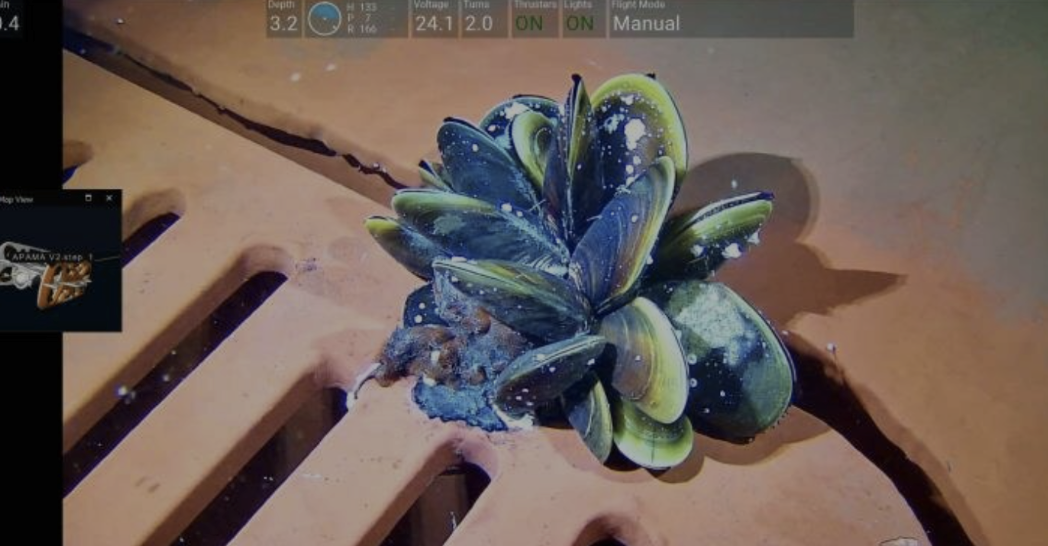The Tasmanian ROV Project, which explored the utilization of observation-class ROVs for marine pest surveillance programs, was completed in two phases – the first listed here. Phase two took the research from the first phase and focused on making modifications to ROV design, undertaking an assessment of navigational aids, and preparing training material.
Abstract: A key focus of Australia’s MarinePestPlan 2018–2023 and the accompanying National Marine Pest Surveillance Strategy is the development of cost-effective methods suitable for locating and identifying marine pests. A new generation of smaller and more economical remotely operated underwater vehicles (ROVs) has demonstrated potential for this purpose. In 2018 the Australian Government Department of Agriculture Fisheries and Forestry provided funding to Biosecurity Tasmania (BT) to examine how these ROVs might be integrated into marine pest surveillance and inspection programs.
The Tasmanian ROV Project (the Project) was undertaken in two phases. Phase 1 was completed in 2020, examining the range of options available and making recommendations on future development and investigation. These recommendations included making modifications to ROV design, undertaking an assessment of navigational aids, and preparation of training material. These three recommendations became the focus of Phase 2 which was completed in June 2022, with this report prepared later the same year.
It was found that ROVs examined during Phase 1 did not satisfy all requirements outlined within the project methodology, therefore a new type of ROV needed to be developed. Key requirements were identified as being an ability for 360-degree movement across all planes, ability to maintain fixed attitude in any orientation, and ability to operate effectively in free-flying and crawler modes. The ROV also needed to be able to accept a range of auxiliary equipment and upgrades to camera systems.
The Apama ROV developed during Phase 2 is an evolution of the modified Blue Robotics ROV (BRH) and addresses many of the deficiencies previously identified in Phase 1. Both the Apama and BRH can operate in free-flying and crawler modes, but the Apama now has improved manoeuvrability and stability in free-flight. This dual functionality is a major advantage for marine pest inspection because it allows freedom of movement through the water plus the ability to land when closer inspection is required.
The ROVs capacity to land on surfaces and move around in any orientation was found to be the single most significant factor contributing to improvement in image quality and the collection of biofouling samples. This also assisted inspection of niche areas, in particular sea-chests, and made the ROV less susceptible to the effects of surge and swell when operating in higher energy sites. The crawler mode also aided in navigation when inspecting ship hulls by providing an ability to track at a constant speed and direction along the hull, making inspections easier and less tiring for pilots.
Use of zoom and focusable lenses were also found to be features best suited to ROV platforms with the ability to stabilise themselves against structures. This removed the challenges associated with constant movement and allowed the camera to accurately focus onto small subjects, providing the best opportunity for identification of marine pests.
Phase 2 trialled a range of auxiliary equipment designed to enhanced positional awareness and track ROV movement, but also biased these investigations towards more economical options. It was found that no single system adequately provided positional awareness for all situations encountered during marine pest operations, instead, a combination of systems is recommended. The combination of scanning SONAR, Doppler velocity log (DVL), and ROV mounted GPS was considered to provide the best basic configuration. Where supported by ROV software, DVL systems had the added advantage of allowing automated tracking and position-hold functions. Navigational capacity can be further enhanced through the addition of base-line systems by linking the ROV to a surface reference point.
The Project also examined options for live streaming of video and control ROVs from distant locations using internet connection. Both functions offered major benefits though allowing experts to guide and support operations remotely. However, it is recommended that the ability to operate ROVs via internet connection from anywhere in the world offers the greatest potential for development of training and support, as this provides a cost-effective method of allowing experienced pilots to support operations, either directly or as a training mentor.
Both phases of the Project provided training in the form of workshops and the development of training material (written and video). This material has directly contributed to the development of accredited training units for ROV operators and are now available for use within vocational education training programs.
In conjunction with Notilo Plus, Phase 2 also trialled image recognition software designed to assess levels of biofouling. These trials indicated that the software provided an effective and reliable measure of hull biofouling assessment. These trials also concluded that the Apama and BRH platforms were highly suited to the hull inspection role due to the stable high-quality images produced and their ability to conduct more structured and systematic inspections. Thus, the combination of the Apama and artificial intelligence recognition software has been demonstrated as a viable option for the assessment of ship hull biofouling.
The Project has demonstrated that high functioning ROVs can successfully support marine pest operations and be supplied for less than $40000 AU. These units are particularly suited to inspection of shipping but can also undertake port inspections and benthic surveys. Further development and implementation of the Australian designed and manufactured Apama is therefore strongly recommended.
This Tasmanian ROV Project has shown how close collaboration with service providers can guide development of technology to better meet the needs of regulators. The unexpected spin-off of this association has been that designs developed during the Project have been taken up by other organisations, resulting in the emergence of local manufacturing in Tasmania.
Author: Ellard, K.
Prepared By: Invasive Species Branch of Biosecurity Tasmania, Tasmanian Department of Primary Industries Parks Water and Environment.
To read more, click here!

